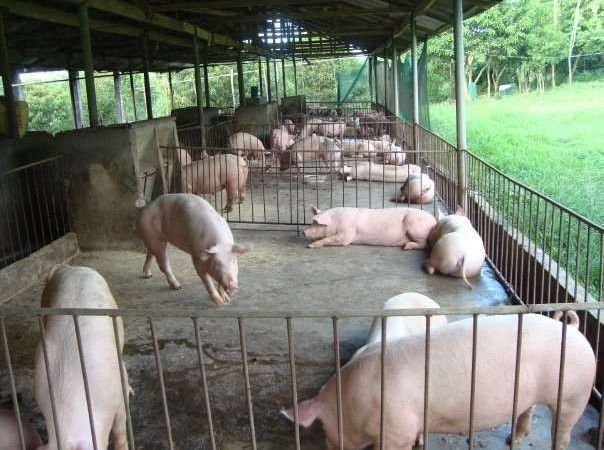

For a successful business in Piggery , the basics have to be in place. What are they and what would be the suitable production system!
All piggery sites must have a good water supply,It is one of the first things prospective pig farmers should have.
If the new piggery facility will house more than 250 pigs, it will need Environmental Impact Assessment (EIA) approval.
Good drainage is important so the piggery should be on a slight slope (3° to 5°). It should also have enough natural ventilation, and must be reasonably close to the markets. Delivery and feed costs increase the further away the farm is from the market.
With greater distance, transport costs are added to the price of the feed, and deducted from the net return on pigs sold
Modern commercial pork production takes place mainly in enclosed buildings, which protects pigs from the weather (they’re very sensitive to sun) and disease. Production can take place in either single or multi-site systems.
Single Site Production
This system is set up in the same biosecure fenced area.
The breeding herd, weaners, and grower/finisher herd are all on the same farm (or site). Animals at different stages of development and production are usually housed in different buildings, however, about 25 m apart.
The advantage of this system is that pigs can easily be moved to pens/houses appropriate for their age, weight or stage of production.
Single-site production is also considered to be more convenient and labour costs are often lower as workers “multi-task” on site.
The major disadvantage is the spread of disease because animals of different ages with different levels of disease resistance are housed together.
This can increase stress levels, and more medication will be required to control disease.
Multi – Site Production
Health concerns have changed the way piggeries are set up.
Many modern operations house each production phase at a different site, which helps to minimise contact between pigs of different ages.
This is referred to as a multi-site operation.
A 2-site system, for example, could have breeding, gestation and farrowing at one site, while the weaners and grower/ finisher pigs are at a separate site.
A 3-site system would have a breeding herd on one site, weaners on another, and growers on the third site.
The major benefit of this system is that animals are separated by age. This assists in disease control as younger animals are less resistant to diseases
A multi-site system is also more specialised and, he explains, it is hugely beneficial to have experts on each phase of pig production to operate a site.
 Contact Jaguza Support
Contact Jaguza Support